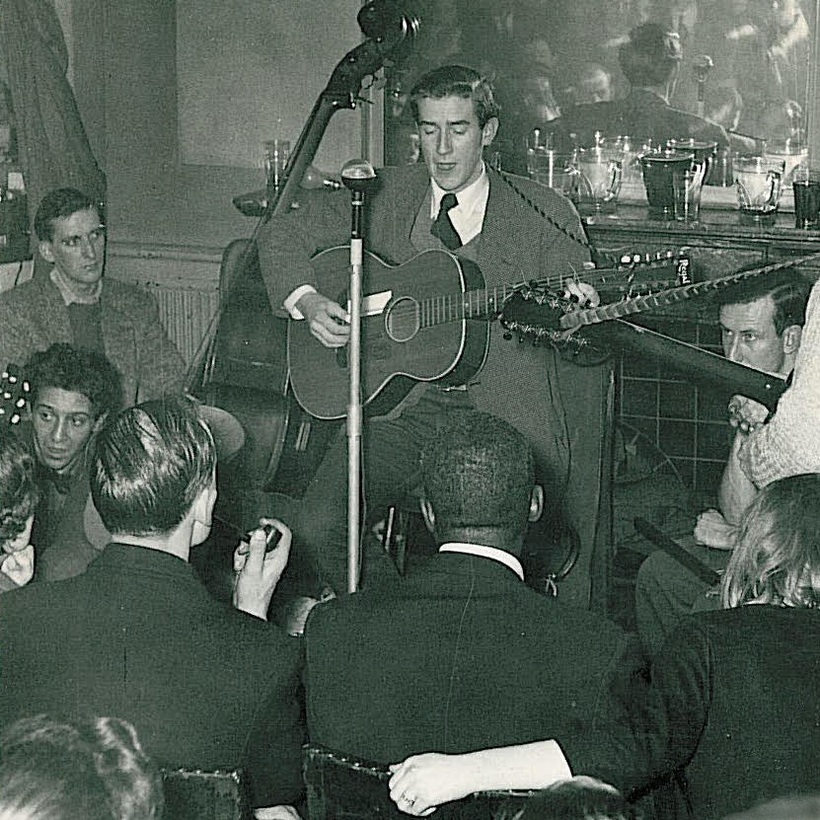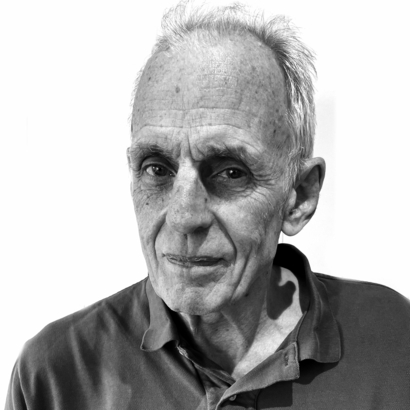A few days ago, I boarded a train from London to Berwick-upon-Tweed, to the Scottish Borders. I was carrying a Guild F-212, a 12-string guitar made in the early 60s, about the best you can play. I was heading for a great Palladian house called Marchmont, near Greenlaw in Berwickshire, where a celebration was planned in honor of Rory McEwen, who was born there and who died in 1982, aged 50.
Rory was a rare and extraordinary man, his achievements shadowed by his early death. His friend the American artist Jim Dine said of him, “He was touched by God, not just with the skills as an artist, but by all skills.”
He was a botanical painter, “probably the greatest illustrator of natural form” in his lifetime, said the critic Alastair Mackintosh, equal to the masters of the 18th and 19th centuries, such as Redouté and Ehret. He also had fame as a folk singer and player of the 12-string guitar, in the style of Leadbelly.

It was by watching Rory on television, Van Morrison said, that he decided to take up music. “He was right in at the beginning of introducing Leadbelly and the blues into the U.K.,” he said. “He’s been completely written out of musical history.”
Rory had other gifts. He had remarkable good looks. He had grace and charm, a talent for connecting with people, and a gift for comedy and invention. He was “startling and stylish and witty,” said his friend the literary editor Karl Miller.
David Bailey claimed that Swinging London was never more than 50 people who wanted to hang out together. If that was the case, its hub was the McEwens’ large house on Tregunter Road, off Fulham Road.
“[Rory McEwen] was right in at the beginning of introducing Leadbelly and the blues into the U.K.,” said Van Morrison. “He’s been completely written out of musical history.”
In 1958, Rory had married Romana von Hofmannsthal, an Astor who supplied a New York connection. At their London home, you’d see, variously, the Everly Brothers (“In their neat suits, with razor-sharp creases,” Romana remembered, “looking like little gray flannel dolls”); John Lennon, taking the Everlys’ guitar instruction; Bob Dylan, who had a party there in January 1963, and whom Rory took to meet Robert Graves; Princess Margaret; and Larry Adler playing with Julian Bream.
The actor Peter Eyre remembers an evening when Barbra Streisand and Jonathan Miller (of Private Eye and Beyond the Fringe) were watching Ravi Shankar play the sitar. “How 60s is that?”
The famous 30-year collaboration between George Harrison and Shankar also germinated at Tregunter Road. Shankar played a private concert there—something he never did—and later became a long-term guest in the cottage in the garden.
Scottish Blues
Rory’s inspiration came from the fabled countryside of Merse, the farmland of Berwickshire of his childhood. He was in the middle of seven siblings in a large Catholic family who called him “the Wizard,” for his nimble inventiveness. Rory’s father was a Conservative politician.
“I was born in an eighteenth century house, brought up, truth to tell, in the eighteenth century,” wrote Rory in a catalogue of introduction. “My father was an Edwardian, yet because of having an older brother who was deeply immersed in jazz by the time the Second World War started, the music of the Southern blues spoke to my heart from the time of my childhood. Leadbelly was early to become my friend and companion.”
Huddie Ledbetter’s genius came via the windup gramophone in the attic at Marchmont, where Rory and his younger brother Alexander also started singing the Scottish songs and the beautiful Borders ballads they later took on the road. Twelve-string guitars were unfindable. Rory would have to wait seven years for one. Meanwhile, he won prizes in the Eton Drawing Schools, where his teacher Wilfred Blunt thought him “perhaps the most gifted artist to pass through my hands.”

In 1955, “the McEwen Brothers” set off playing and singing across America. They appeared twice on The Ed Sullivan Show. In Galveston, Texas, Rory found his first 12-string in a pawnshop, and knew almost by osmosis how to play it.
Real fame came on their return, when they played regular slots on Tonight, the most watched current-affairs show in Britain. Tonight was what Van Morrison saw. “No one else was playing 12-string. Actually, [Rory’s] the only person I’ve ever heard who played it for real, like Leadbelly,” he said. “When I first saw it on TV it was wow—it was one of those moments when I ended up taking music seriously, because up until then I wanted to be a vet.”
There is a milestone photograph of Rory in 1957 playing his 12-string at the Roundhouse in Soho with Cyril Davis, a panel beater from Wembley, on harmonica, and Alexis Korner on guitar. Korner and Davis were about to form Blues Incorporated, a band whose ever changing lineup featured most members of the future Rolling Stones, Yardbirds, Manfred Mann, and Kinks. Eric Burdon of the Animals claimed his start from Rory. Eric Clapton remembered him as “fantastic” in the burgeoning R&B clubs.
“The music of the Southern blues spoke to my heart from the time of my childhood.”
I, too, saw Rory on television, when I was about 13. I was already playing the guitar. I met him with my parents. He drew me a map to Tregunter Road.

When I first heard him play close up in his house, the air changed color and never changed back. The powerful double strings gave the 12-string the locomotive drive of the Delta, but also the shuffle and wheeze of the Cajun accordion of Leadbelly’s native Louisiana. Rory had magicked this into his playing.
I came back, and back, to learn the licks. He never turned me away. One day he lent me his 12-string, and I carried it home on the train, never taking my eyes off it. He left me his Guild 12-string in his will. He was unbelievably generous to me.
Forty or so years later, I was sitting beside Van Morrison on a sofa, playing. We both knew the stuff backward. He couldn’t believe it: “That’s fucking me,” he said. “Where have you been all my life?”
When I first heard Rory play close up in his house, the air changed color and never changed back.
Rory dropped music for painting in 1965. He had discarded paper for painting on vellum, which gave a powerful translucence and depth to his work. He’d surpassed botanical illustration—he saw in his tulips, fritillaries, anemones, wildflowers, onions the life of all plants, all nature, the magic of the universe, of life, death, decay, the void. “I paint flowers,” said Rory, “as a way of getting as close as possible to what I perceive as the truth, my truth of the time in which I live.” Robin Lane Fox, the Oxford classicist and gardening columnist, wrote, “McEwen is the greatest painter of tulips since the Dutch masters of the 17th century. In their lines of broken colour, their facts become art through love.”
Rory went to live in Scotland at Fogo, not far from Marchmont, which was slowly sinking into debt and tragedy. Two of his brothers had died aged 46 and 37. Robin, the second-eldest son, once a brilliant barrister, inherited Marchmont and a bankrupt estate and was drinking himself to death, barely communicating with his family.

The designer Bella Freud, a friend of Robin’s daughter Katie, remembers visiting Marchmont when she was nine. She describes a “feral” existence for the many children in this huge house. “Sometimes I felt we were just like a gang of rats running from one end of the attic to the other,” she said. It was cold, too, and there was never enough food. Robin died of a heart attack in 1980.
Rory was operated on for cancer in 1979. In 1982 it returned, this time in the form of a tumor on the brain. In the last call I received from him, he said simply, “I’ve got to get out of this.” He was seeing double, suffering from dementia and terrible headaches, barely alive. He got out of it by taking his own life.
In 1988 the estate was sold, and the house became a nursing home. I had heard no more about Marchmont until I got a call from Christabel, Rory’s daughter, a few months ago. The house had been taken back and restored, she said, and to beyond any of her expectations, by Hugo Burge, son of the property developer Oliver Burge, who had bought the estate.
Hugo had made his own fortune with the Web site Cheapflights. A designer manqué, with a passion from childhood for the Arts and Crafts movement, he had turned the house into “a home for makers and creators.” He had set up supported residences in various outbuildings, including Rory’s old studio at Fogo.
He wanted to restore Rory’s legacy, and announced a weekend called “Spirit of Rory McEwen,” set up with Rory’s children Flora, Christabel, Samantha, and Adam. There would be an exhibition of his work. There would be talks and presentations. And there would be music under the direction of the TV music presenter and pianist Jools Holland, Christabel’s husband and the son-in-law Rory never met.
It was a great lineup: Martin Carthy, the distinguished folk singer who played with Rory on Hullaballoo in the 60s, and his daughter, Eliza, a songwriter and fiddle player (both were decorated with M.B.E.’s.), along with David Ogilvy, a young friend of Rory’s as well as a singer-songwriter and guitar player. Would I play? I was up for it.
Marchmont looked extraordinarily beautiful in early spring, at the end of the mile-long avenue leading straight to its front door—thought to be the longest in Scotland. The staterooms were restored to their Georgian splendor, with sculpture—Lynn Chadwick, Henry Moore, and Antony Gormley on the roof—and paintings from the Grand Tour and by the Scottish Colourists.

The rat-run attic was now the Lorimer apartment, after the Scottish architect Sir Robert Lorimer, who redesigned the house in 1914–17, and it was filled with work by Arts and Crafts masters such as Ernest Gimson, all collected by Hugo Burge. At the end of the schoolroom, where the 78s scratched out Leadbelly, was a dining room in the style of the Arthurian Revival.
I went up to the attic with Rory’s niece, the writer Christian McEwen, whose family home this was, who identified the old schoolroom. Her essay “Music Hiding in the Air”—a moving memoir of and correspondence with Rory included in the exhibition—is the finest writing about him.
We had panels with botanists and curators, and with friends of Rory’s such as David Dimbleby, the TV presenter, and Nicky Haslam, the famous interior decorator, writer, and tea-towel arbiter of all things “common,” who said he’d met Rory and Romana at Cliveden with the Astors. “He was magic. He literally changed my life,” he said. “From the day I met them Rory and Romana were part of my life forever. To me he was the ultimate humanist. There was no retreat from the absolute.... He took that for granted.”
It was our turn to play to a large ballroom, full of well-oiled guests. The set list kicked off. The spotlight hit my kisser, as Ethel Merman would say, and Rory’s F-212 did the rest.
A traveling exhibition on Rory McEwen will open in 2023
James Fox is a London-based journalist, author, and co-author of Keith Richards’s memoir, Life, and David Bailey’s memoir, Look Again

